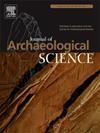Multi-proxy approaches in Archaeobotany: Botanical reconstruction of ancient gardens from a Mediterranean perspective
IF 2.6
1区 地球科学
Q1 ANTHROPOLOGY
引用次数: 0
Abstract
Over the past two decades, the field of garden archaeology has expanded significantly in both temporal and spatial scopes, moving beyond its initial focus on the gardens of the Vesuvius region. These early Roman gardens, remarkably well-preserved, feature the first instances where garden soils were treated as archaeological artifacts. This innovative approach laid the groundwork for the study of ancient gardens in subsequent decades. The developments of this discipline in recent years are largely attributable to advancements in archaeobotanical techniques and the incorporation of new methodologies. This paper seeks to review the current knowledge of archaeobotanical methods used to identify ornamental plants cultivated in ancient gardens. The most efficient techniques involve microbotanical proxies such as palynology and phytolith analysis, as well as the study of macrobotanical remains, including wood, charcoal, seeds, and fruits. For each type of archaeobotanical method, this paper will explore sampling strategies, identification possibilities, data interpretation, and associated strengths and limitations. The article demonstrates that employing multiple archaeobotanical techniques enhances the accuracy and comprehensiveness of the resulting list of ornamental plants. Once such a list is established, it can be integrated with other evidence, such as root cavities, to reconstruct garden designs and identify gardening trends, including the use of exotic species or practices such as dwarfing trees and shrubs. Additionally, the suggested list of ornamental plants can help reconstruct the sensory experience of ancient gardens, considering the plants' colors, scents, and possible soundscapes. This sensory analysis is further enriched by examining the surrounding environment, the garden's visual communication, and its features, including walls, fountains, channels, pools, and statues. This review paper primarily focuses on the ancient gardens of the Mediterranean and the Near East, but the approaches discussed and the conclusions drawn are applicable to ancient gardens worldwide. Prospects of the discipline are also given.
考古植物学中的多代理方法:地中海视角下古代园林的植物重建
在过去的二十年里,花园考古领域在时间和空间范围上都有了显著的扩展,超越了最初对维苏威火山地区花园的关注。这些早期的罗马花园保存得非常完好,是花园土壤被视为考古文物的第一个例子。这种创新的方法为随后几十年对古代园林的研究奠定了基础。近年来这一学科的发展主要归功于考古技术的进步和新方法的结合。本文旨在回顾目前用于鉴定古代园林中栽培的观赏植物的考古植物学方法的知识。最有效的技术包括微植物学指标,如孢粉学和植物岩分析,以及宏观植物遗骸的研究,包括木材、木炭、种子和果实。对于每种类型的考古植物学方法,本文将探讨采样策略,鉴定可能性,数据解释以及相关的优势和局限性。本文论证了多种考古技术的应用提高了所得到的观赏植物名录的准确性和全面性。一旦建立了这样的清单,就可以将其与其他证据(如根腔)结合起来,重建花园设计并确定园艺趋势,包括使用外来物种或矮小树木和灌木等做法。此外,考虑到植物的颜色、气味和可能的声景,建议的观赏植物清单可以帮助重建古代花园的感官体验。通过考察周围环境、花园的视觉交流及其特征,包括墙壁、喷泉、通道、水池和雕像,这种感官分析得到了进一步的丰富。本文主要关注地中海和近东的古代园林,但所讨论的方法和得出的结论适用于世界各地的古代园林。展望了该学科的发展前景。
本文章由计算机程序翻译,如有差异,请以英文原文为准。
求助全文
约1分钟内获得全文
求助全文
来源期刊

Journal of Archaeological Science
地学-地球科学综合
CiteScore
6.10
自引率
7.10%
发文量
112
审稿时长
49 days
期刊介绍:
The Journal of Archaeological Science is aimed at archaeologists and scientists with particular interests in advancing the development and application of scientific techniques and methodologies to all areas of archaeology. This established monthly journal publishes focus articles, original research papers and major review articles, of wide archaeological significance. The journal provides an international forum for archaeologists and scientists from widely different scientific backgrounds who share a common interest in developing and applying scientific methods to inform major debates through improving the quality and reliability of scientific information derived from archaeological research.
 求助内容:
求助内容: 应助结果提醒方式:
应助结果提醒方式:


